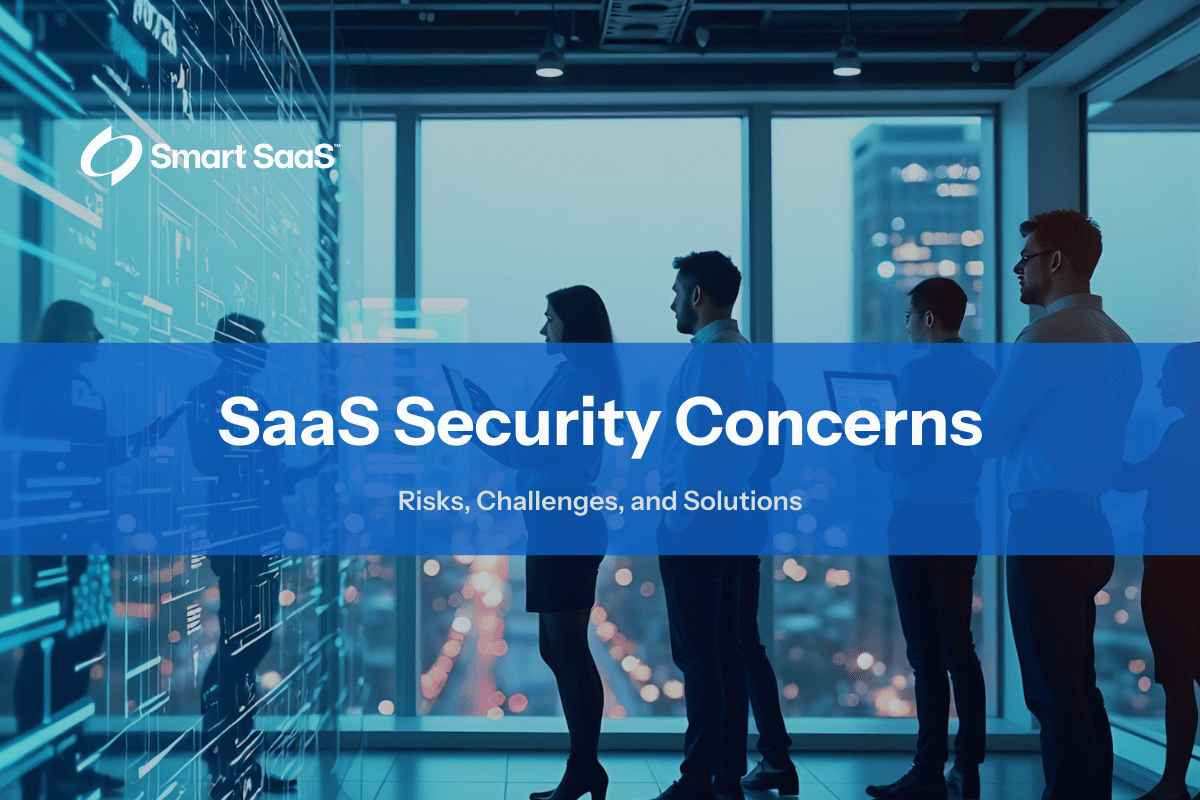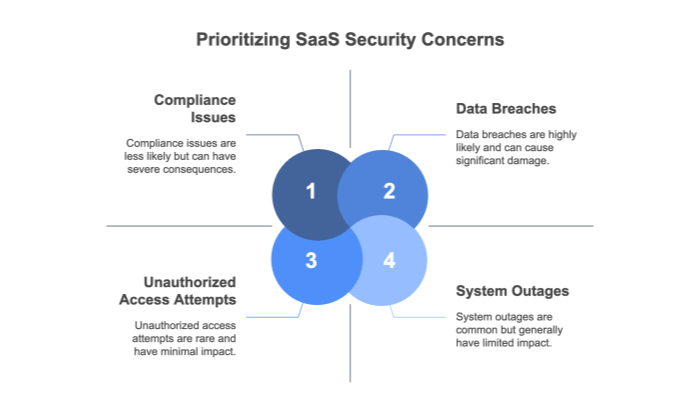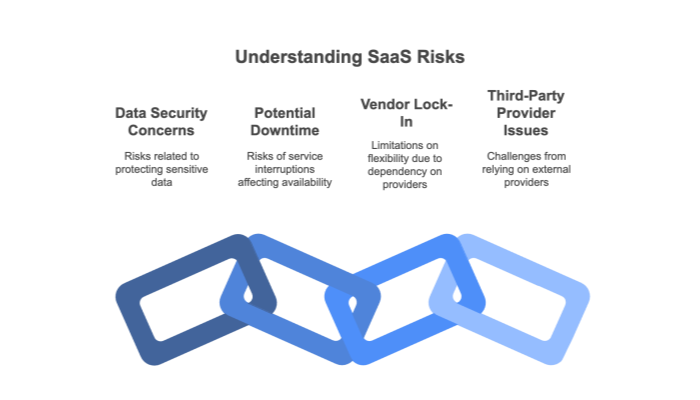

Thursday, March 6, 2025
Kevin Anderson
Software as a Service (SaaS) has rapidly become a cornerstone of modern business operations, offering scalable solutions, simplified maintenance, and reduced upfront costs. Yet as SaaS adoption soars, SaaS security concerns also grow more pressing. With critical data stored on third‑party servers, organizations must be vigilant about everything from unauthorized access to compliance missteps. Failing to address these SaaS security risks can lead to data breaches, reputational damage, and regulatory fines.
In this guide, we’ll explore the most common SaaS applications and vulnerabilities, pinpoint why they matter, and outline actionable SaaS security solutions you can implement right now. Whether you’re new to SaaS software or already rely on multiple cloud‑based solutions, our aim is to provide practical insights into SaaS security issues and help you manage these risks effectively in today’s fast‑evolving threat landscape.

This section examines the unique security challenges that arise with cloud-based SaaS platforms. As organizations shift critical operations to the cloud, they must contend with new vulnerabilities that do not exist in traditional on‑premise environments.
Issues such as unauthorized access, data breaches, and misconfigurations become paramount. In a SaaS model, where data is managed by a third‑party provider, the onus is partly on the vendor to maintain robust security measures while the customer must configure their settings correctly. Understanding these concerns is essential to protecting your organization’s sensitive information and maintaining compliance with various regulatory frameworks.
It is also important to explore how modern tools and best practices—such as strong encryption, multi‑factor authentication, and continuous monitoring—can mitigate these risks. For additional insights on cloud security, consider our article on What is a SaaS Environment?.
At its core, SaaS refers to software that is hosted in the cloud and delivered over the internet. This model removes many traditional infrastructure burdens but introduces new security challenges. Your critical data is stored, processed, and managed by a third‑party provider outside your traditional network perimeter.
Consequently, information security in SaaS revolves around safeguarding data from unauthorized access, data breaches, and vulnerabilities inherent to cloud environments. Unlike on‑premise deployments, where both hardware and software are under your control, SaaS requires you to trust the vendor's security posture and carefully configure your settings.
Understanding the risks is essential for effective mitigation. The primary areas of concern include:


SaaS platforms offer many benefits, such as reduced hardware costs and streamlined updates, but they also introduce significant security risks. As businesses increasingly depend on cloud-based solutions, vulnerabilities within these platforms can have far-reaching consequences. The risks include data breaches in shared cloud environments, account takeovers due to weak authentication, compliance failures, and vendor lock‑in issues that complicate migration efforts.
Furthermore, cloud‑native exploits—such as misconfigured identity and access management or unpatched APIs—can be particularly dangerous, as they may allow attackers to pivot and compromise multiple systems. Understanding these risks is crucial for devising effective security strategies that protect your data and preserve business continuity. For a broader perspective on risk management, read our article on SaaS Billing: Sorting Out The Subscription Chaos.


Mitigating SaaS security concerns requires a proactive, multi‑layered approach. Organizations should implement best practices that span technical controls, regular monitoring, and rigorous vendor compliance reviews. Key measures include enforcing strong access controls with MFA and role‑based access, using state‑of‑the‑art security monitoring tools, and developing a robust incident response plan.
In addition, emerging solutions such as AI‑powered tools can provide real‑time threat detection and automated responses to potential breaches. Compliance is also a critical aspect, ensuring that all security measures align with regulations like GDPR and HIPAA. Regular training for employees and periodic audits of vendor practices are essential to maintain a secure SaaS environment.
For more detailed strategies, check out our SaaS Platforms: Key Features, Applications and Benefits article.


SaaS platforms have transformed business operations by offering scalable, cost-effective solutions that drive innovation. However, these advantages come with inherent security concerns that must be addressed proactively. Data breaches, compliance failures, and vulnerabilities in multi‑tenant architectures underscore the need for robust security measures.
By implementing strong access controls, continuous monitoring, and regular vendor audits, organizations can mitigate these risks and maintain trust. Ultimately, the benefits of SaaS are immense when paired with a comprehensive security strategy that prioritizes risk mitigation and compliance.
Embracing a proactive approach to SaaS security not only protects sensitive data but also ensures long‑term operational resilience and regulatory adherence. For further reading on risk mitigation and best practices, you might also find our posts on Vertical SaaS vs. Horizontal SaaS and How to Build a Successful SaaS Business Model very insightful.

Below are some common questions regarding SaaS security concerns along with concise answers and actionable insights to help you better secure your cloud applications.
SaaS security concerns encompass a range of issues including data breaches, unauthorized access, compliance failures, and vulnerabilities inherent in multi‑tenant environments. These risks stem from the fact that critical data is stored off‑site by third‑party vendors, making robust security configurations and continuous monitoring essential.
Businesses can mitigate these risks by implementing strong access controls such as MFA and role‑based access control, deploying advanced security monitoring tools, conducting regular vendor compliance audits, and providing ongoing employee training on security best practices. Solutions like AI SaaS solutions can also offer proactive threat detection.
Continuous security monitoring enables organizations to detect threats, vulnerabilities, and suspicious activities in real time. By analyzing security logs and user behavior across the SaaS ecosystem, IT teams can quickly respond to potential breaches, minimizing damage and ensuring business continuity.

For further insights on securing your cloud environment, explore these related topics: